Hello friends! Are you ready for another adventure? I hope you’re because today we’re traveling to the beautiful European country Switzerland, also known as the Swiss Confederation.
If you want to learn more about Switzerland don’t forget to download our activity package:
Click here to download our Switzerland learning guide (English)
Click here to download our Switzerland flashcards (English)
Click here to download our Switzerland quiz (English)
–
Click here to download our Switzerland learning guide (Spanish)
Click here to download our Switzerland flashcards (Spanish)
Click here to download our Switzerland quiz (Spanish)
Where is Switzerland located in?
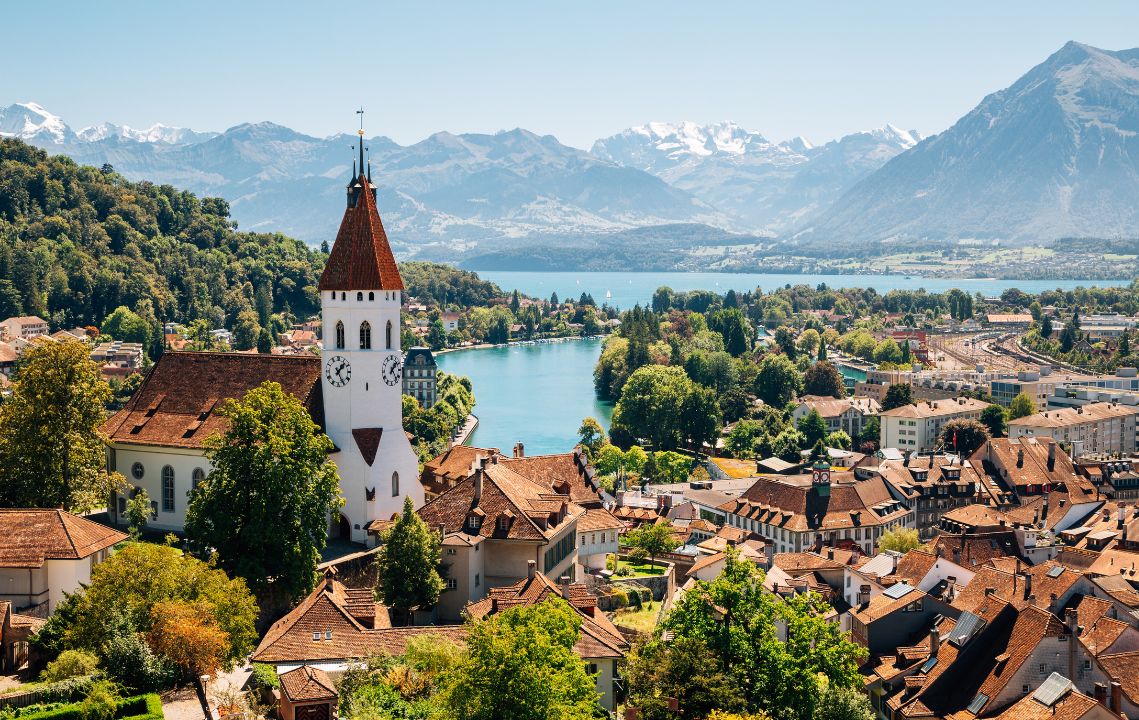
Switzerland is located in Central Europe bordered by Germany to the north, Liechtenstein to the east, Italy to the south, and France to the west. Although it has no official capital, its parliament, government, and foreign embassies are located in Bern. So if you ask anyone in Switzerland, they’ll probably tell you Bern is the country’s capital.
Switzerland is separated into 26 cantons. In case you’re wondering, cantons are like states or provinces!
Switzerland is located right in the middle of The Alps mountain range. About 60% of Switzerland’s territory is mountainous regions. This is not ideal for living, that’s why the majority of the population lives in the northern side of the country known as The Swiss Plateau.
The Switzerland National Flag
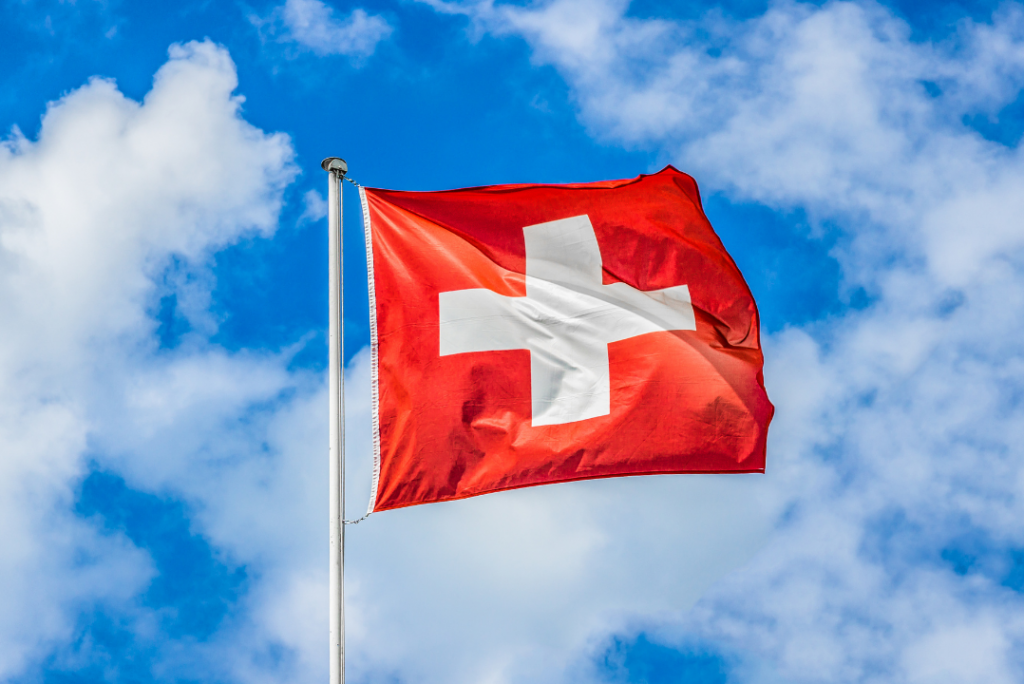
But before we talk about the beautiful Switzerland landscapes, let’s talk about symbols, like the flag! The Swiss flag displays a white cross with equilateral arms right in the center of a red square. The cross is simply known as the Swiss Cross, and it represents “the same Christian cross symbol,” while the red field represents the Old Confederacy. The Swiss flag is one of only two square sovereign-state flags. The other one is Vatican City’s flag!
What language is spoken in Switzerland?
What about the language? Well, due to the four countries surrounding Switzerland, it has four official languages: German, French, Italian, and Romansh! Wait a minute, what is Romansh? Don’t worry, most people don’t know about this language. That’s because it’s a local dialect spoken only in the southeast of Switzerland, and although only 0.5% of the population speaks Romansh, it’s still considered a national langue. The most spoken languages in Switzerland are German and French by more than 80% of the population!
To say “Hello” in German we say “Hallo” or “Guten Tag!” Do you know how we say “Hello” in French? Yes, say it with me, “Bonjour!”
The Swiss people
Now that you know how to greet Swiss people, let’s talk about them. A lot of foreigners who visit Switzerland say the country feels like a “small village,” because most people are very friendly and greet each other all the time! But probably the most recognizable trait of Swiss people is that they take punctuality very seriously. They think that a punctual person is considerate and very respectful towards other people. Hey, probably that’s why they make the best watches in the world!
The Swiss Champ
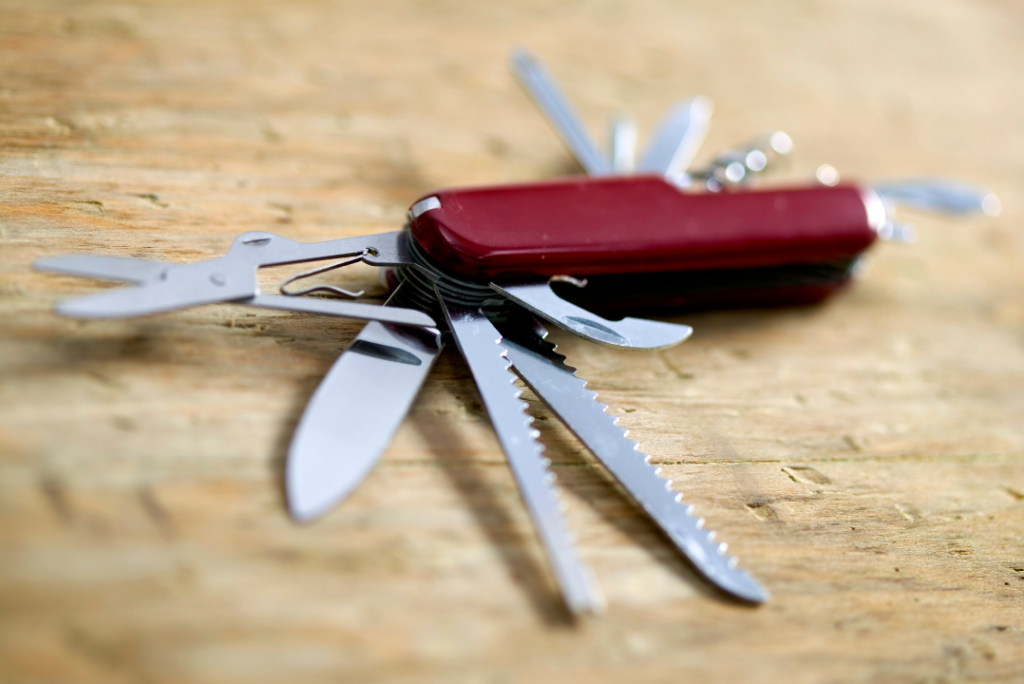
Speaking of “Swiss-made” products, do you know what a Swiss champ is? No, it’s not a champion from Switzerland. It’s that multi-tool pocketknife that maybe you’ve seen in your parents’ tool shed! It’s mostly known as the Swiss Army knife, but that’s not its real name, that’s how American soldiers named it because they couldn’t pronounce the German word “Offiziersmesser” which means “officer’s knife.” This handy tool has not only a knife, but also a pair of scissors, a screwdriver, a can opener, a wood saw, and much more! But remember, although it looks pretty fun to use, this is not a toy and you shouldn’t use it without your parents’ help.
Switzerland landscape
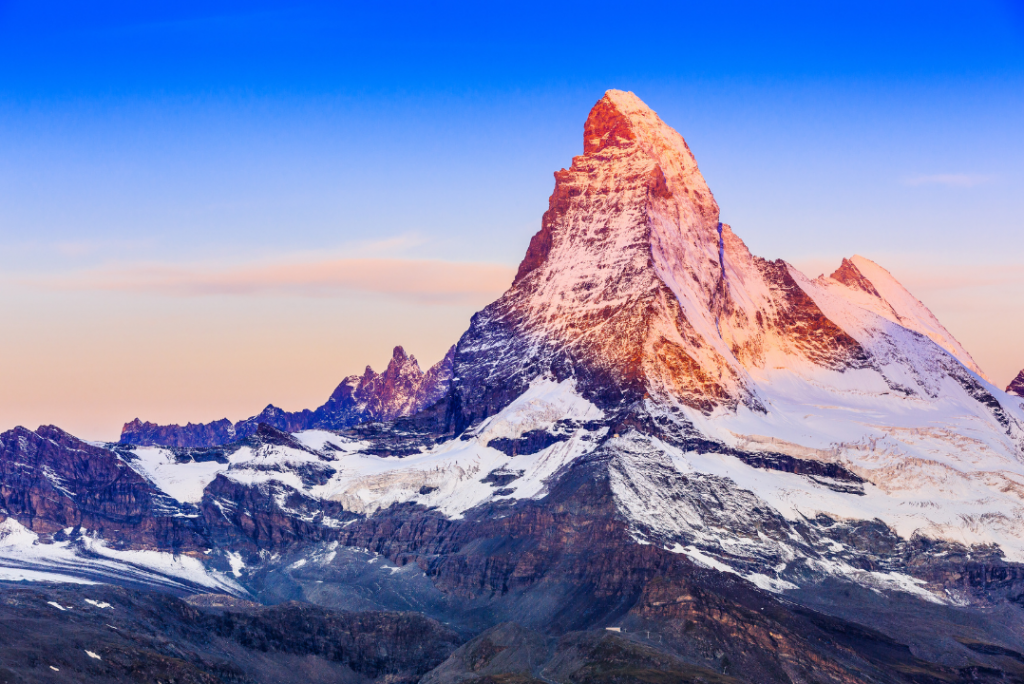
Now let’s talk about some of the most beautiful things in Switzerland, its amazing landscapes and landmarks! The Matterhorn is not only a great example of natural beauty but also a great example of adventure! It’s the most famous of all mountains that make up the Alps and, although it’s not the highest one, at 14,692 ft (4,478 m) high it’s still quite big. With millions of people traveling just to see The Matterhorn, and many local hikers climbing it each year, we can say it is probably the most iconic peak in the world.
The Chillon Castle – known in French as the Chateau de Chillon – used to be the residence of the Counts of Savoy for nearly four centuries. But now it’s one of Switzerland’s biggest tourist attractions. Each year, more than 400,000 guests visit this beautiful castle that consists of 25 buildings and three courtyards. If you want to visit it, it’s located next to the Lake of Geneva, in Montreux.
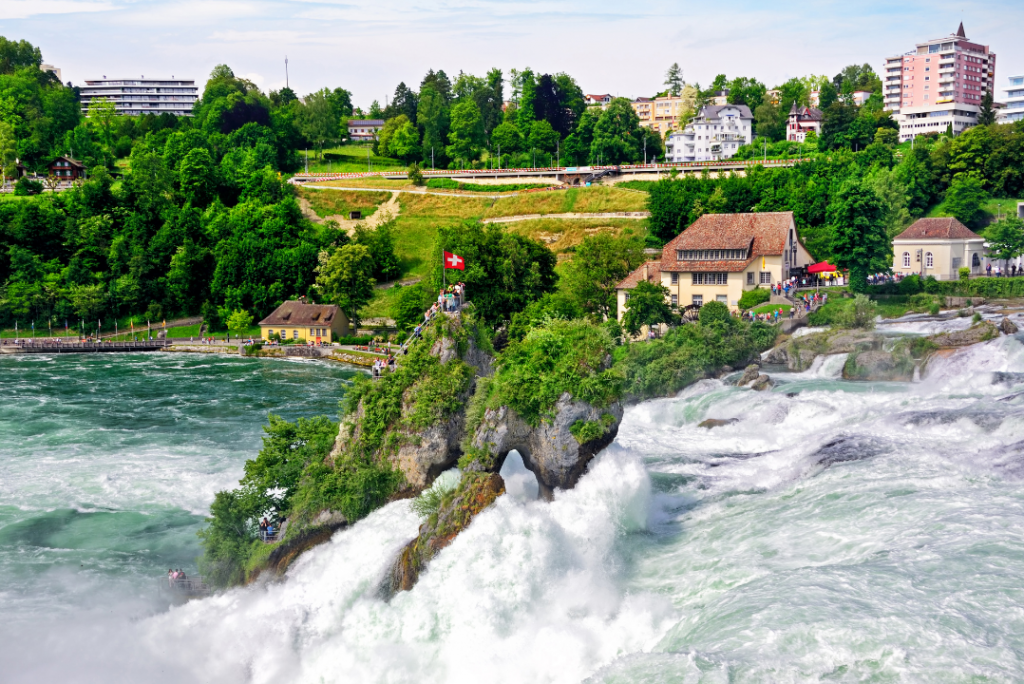
And speaking of lakes, we can’t forget about the Rhine Falls, Europe’s largest waterfalls! At approximately 15, 000 years old, with a width of 492 ft (150 m), and a height of 75.5 ft (23 m), it’s no wonder why it’s so popular. These majestic falls are located on the border between the cantons of Schaffhausen and Zürich.
The beautiful city of Zurich
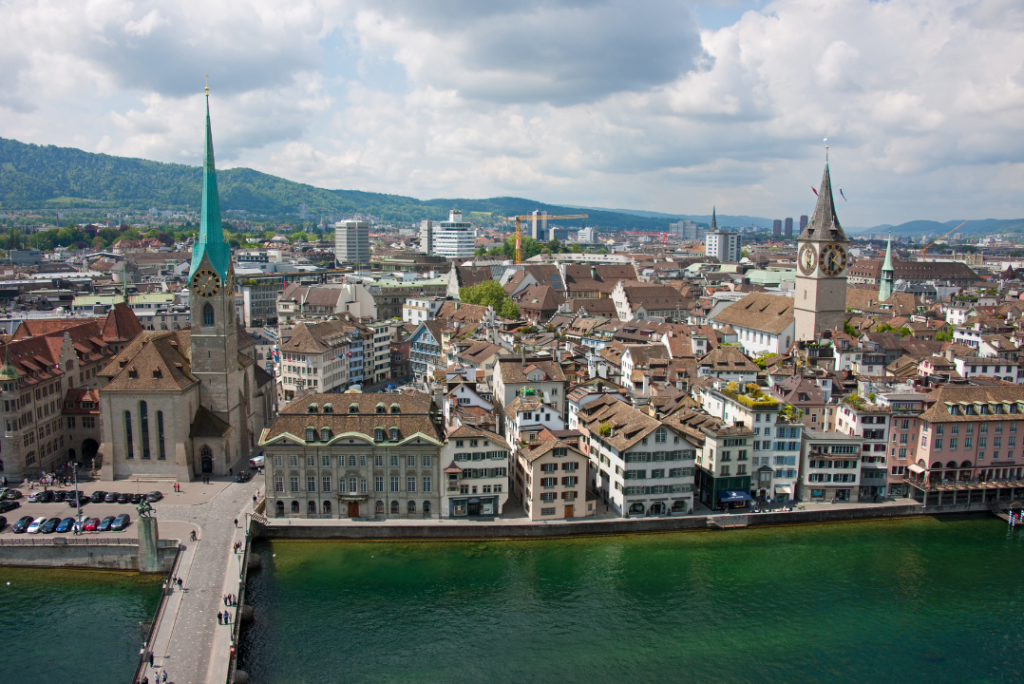
Just like Bern, the unofficial capital of Switzerland, Zürich is a beautiful city full of classic architecture and historic buildings, but there is something that differentiates Zürich, not only from other cities in Switzerland but also from any other city in the world. According to several surveys, Zürich has the highest quality of life as compared to anywhere else in the world! As soon as you get there, you’ll see why. Just don’t forget to visit the old town of Altstadt.
Animals in Switzerland
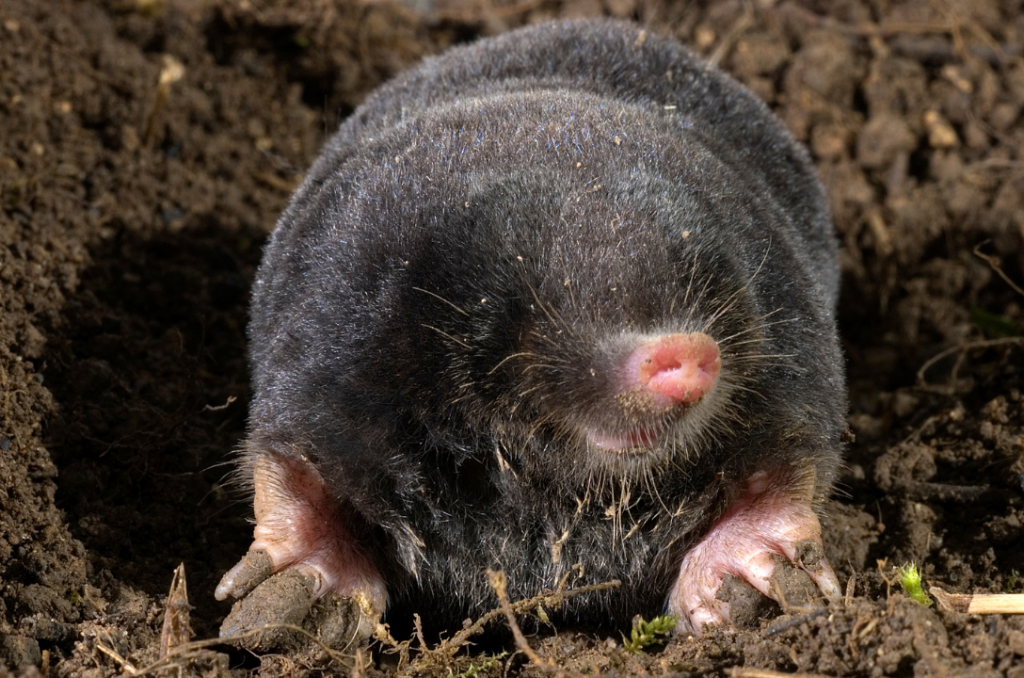
But we can’t talk about Switzerland’s landscapes and nature without mentioning the animals who live here, can we? Since Switzerland is a country with mostly cold weather, every animal here is always looking for a warm place to rest, and no animal does it better than the European mole. These furry friends are found in every corner of Europe, from England to Russia. They like to spend their whole life underground, away from predators and light. Have you ever heard the expression “blind as a mole”? Well, it’s kinda funny because moles aren’t blind at all!
Remember when I mentioned that more than half of Switzerland’s territory is mountainous regions and it’s hard for people to live there? Well, these horned animals have no problem living in the mountains! The Alpine Ibex is a goat easily distinguished because of its long curved horns. This animal has hunted to extinction about two centuries ago in Switzerland, fortunately, it was reintroduced in the early 1900s, and now there are about 40,000 of them in the Swiss Alps.
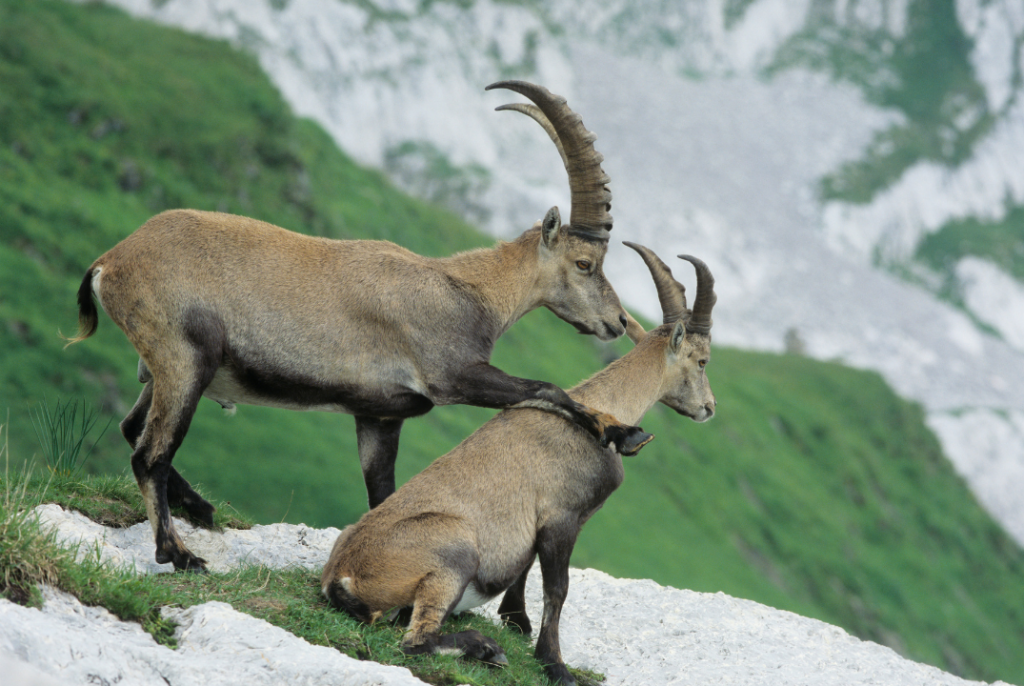
Now, look at this cute little friend. The mountain hare is a species of the hare family that lives in the mountains and polar habitats. You can find them in the Alps but you can barely see them because of their white fur that blends them into the snow.
Another great example of Swiss wildlife is the bearded vulture, and yes, it’s called that because of the little beard it has under its beak. It’s known by the locals as Lämmergeier which translates to “lamb vulture.”
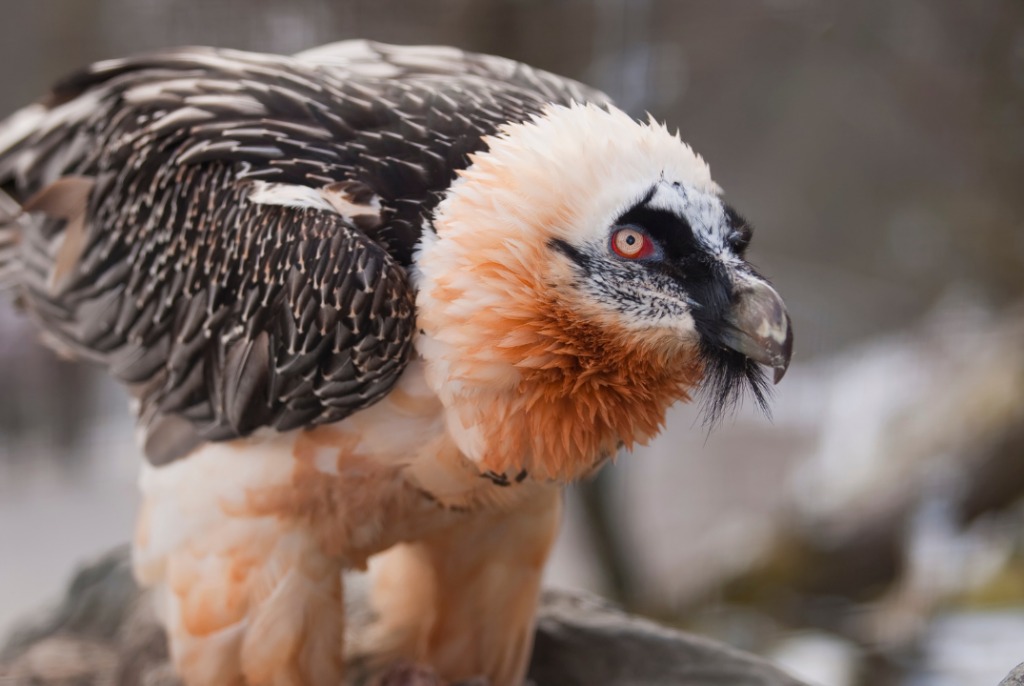
Sports in Switzerland
Now that we talked about some of the animals in Switzerland, let’s talk about what Swiss people do. Specifically, what kind of sports they like.
Switzerland’s national sport is the Schwingen, a Swiss form of traditional wrestling. Wait, it’s like the wrestling we’ve seen on television?! Actually no, but they do wrestle in a ring, a round ring covered with sawdust, let me explain: The two opponents wear short pants made of jute over their clothes, they hold each other by these pants and try to throw the opponent onto his back. A match is won when the winner holds the opponent’s pants with at least one hand and both the opponent’s shoulders touch the ground.
The most important Schwing festival is the Eidgenössisches Schwing- und Älplerfest, which takes place every three years. The winner of this tournament is proclaimed Schwingerkönig and receives a bull as his prize. Yes, that’s right, not a medal or a trophy, but a bull! That’s crazy! Some other very popular sports in Switzerland are ice hockey, skiing, football, tennis, and basketball.
Swiss Food
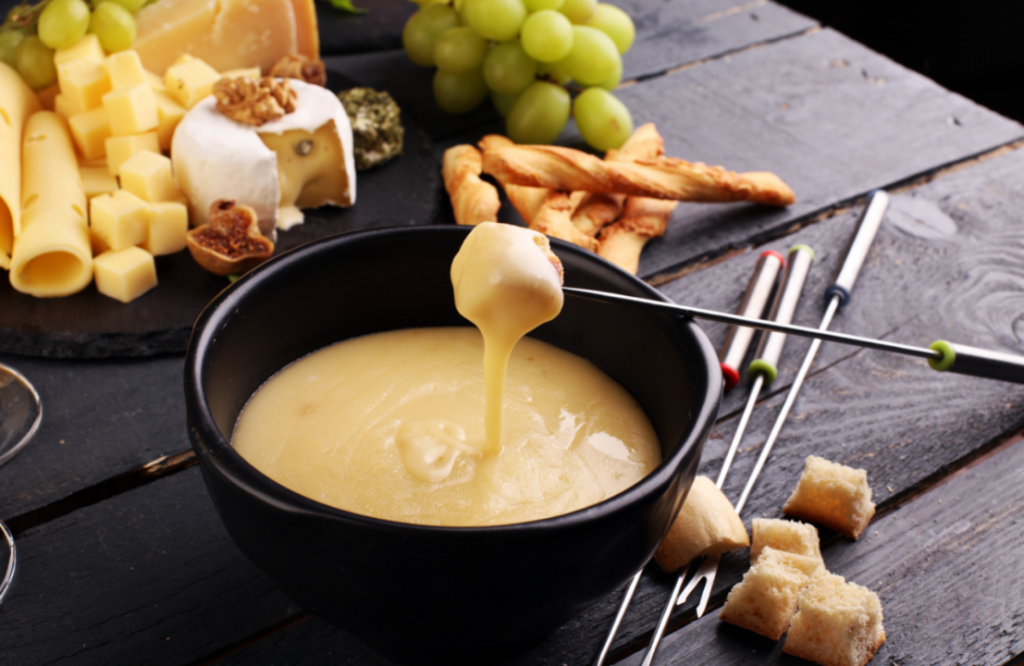
Wow, talking about sports and Schwing got me hungry! Let’s see some classic Swiss food. Like the Swiss fondue! Switzerland is well known for its delicious cheese, but when you melted it, it’s even better! Most Swiss fondues are made with Gruyère and other cheese, such as Emmental. Fondue is served in a petite ceramic pot called a caquelon, with a burner underneath that keeps its temperature constant.
Another classic and tasty dish is the Älplermagronen. This super-pasta was invented in the 1930s by farmers in the Alps, and its ingredients include not only pasta but also potatoes, cheese, fried onions, and garlic. It’s often served with stewed apples!
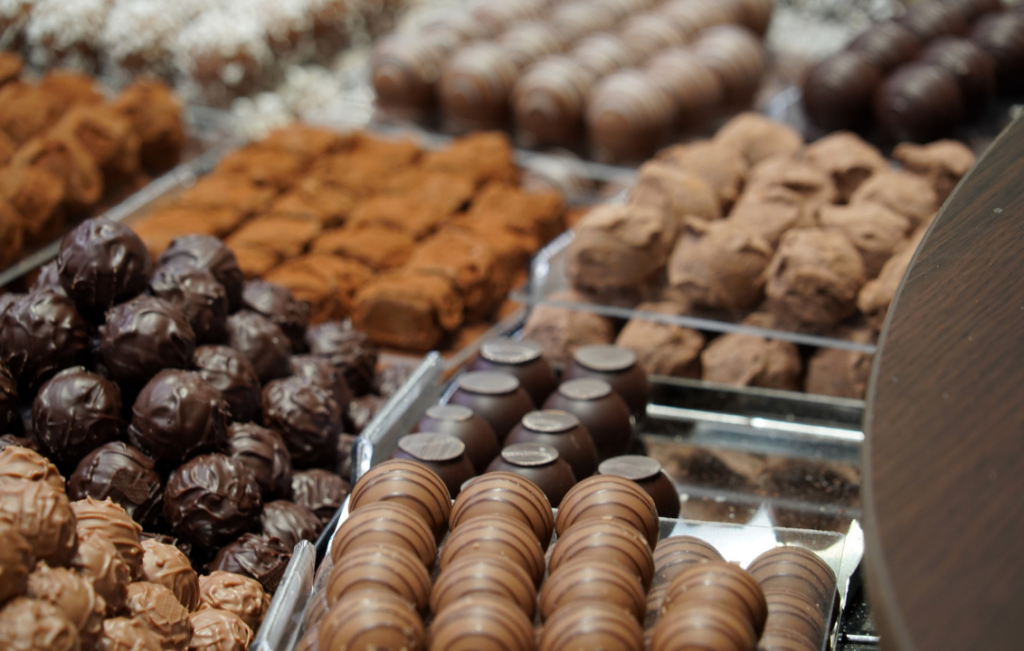
What about dessert? Switzerland has great desserts, one great example is the Bűndnernusstorte, which is a caramelized nut-filled pastry pie that originates from the canton of Graubűnden. The best part is that you can find it in basically every bakery in Switzerland!
I know what you’re thinking: “What about the Swiss chocolate?” It’s not wondering why so many people consider Swiss chocolate as one of the best in the world, the alpine regions are home to creamy, rich milk, which is key to making chocolate with a silky consistency. The oldest factory in the country is Cailler, which name is almost synonymous with Swiss chocolate. Other great chocolate factories are the Maestrani’s Chocolarium, House of Läderach, and The Camille Bloch Chocolate Factory!
Skiing in Switzerland
Now that we are so full of energy thanks to the Swiss chocolate, it’s time for some fun. And what better way to have fun in Switzerland than skiing! As you may know, thanks to the Alp’s high peaks and cold climate, Switzerland is one of the best places to enjoy winter activities—especially skiing. There are several ski resorts in Switzerland that offer sledding, snowparks, cross-country skiing, paragliding, heli-skiing, and more.
Swiss Music
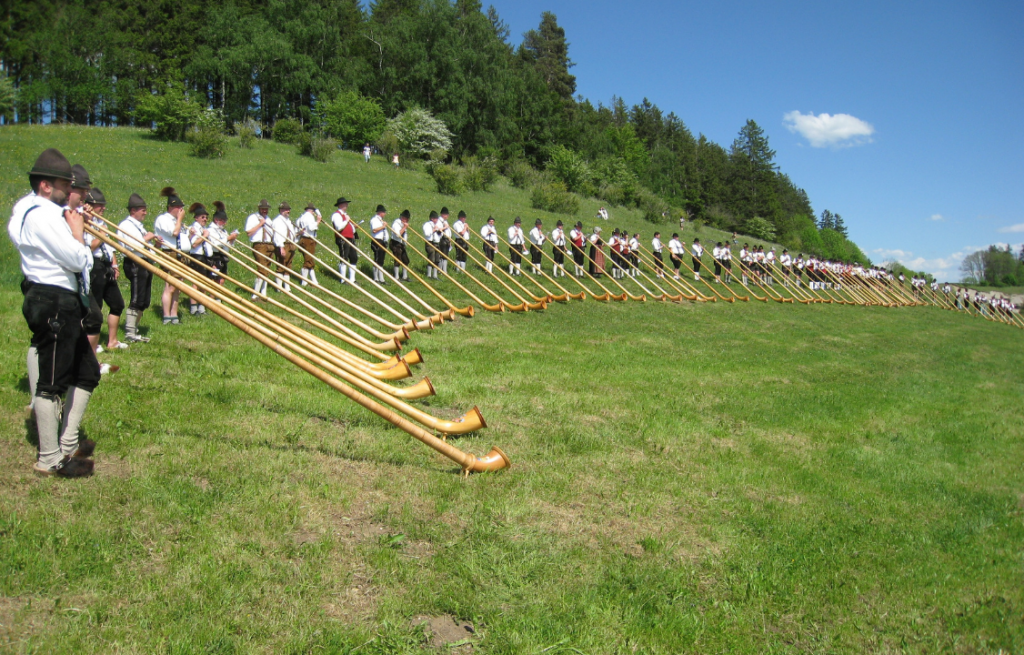
Now let’s talk about what kind of music Swiss people listen to. Swiss people not only like mainstream pop, rock, and hip-hop, just like almost every other country in the world. But they also are huge fans of American country music and Schlager, which is simply lovesongs in the German language. However, if we talk about music, we can’t ignore traditional Swiss folk music, such as Alphorn music, Ländler, and the classic yodeling!
The most known musical instruments used in Swiss folk music are the accordion, known in Switzerland as “Schwyzerörgeli,” the violin, bass violin, clarinet, and also the Alphorn, which is a huge wooden horn. It was originally used for communication in most mountainous regions of Europe, but now they’re used as musical instruments.
Let’s talk more about yodeling. You probably had heard this one before. Also very popular in Germany, yodeling is a form of singing which involves repeated and rapid changes of pitch between the low and high pitch. It was originally used mainly by shepherds to communicate with each other while being in the mountains. There are still yodeling festivals being held to this day!
Traditions in Switzerland
Speaking of traditions, did you know that in Switzerland there’s a tradition where people show their best horses? Yes, that’s right. In Saignelegier during summer, horse enthusiasts converge and show their thoroughbred horses and their prowess!
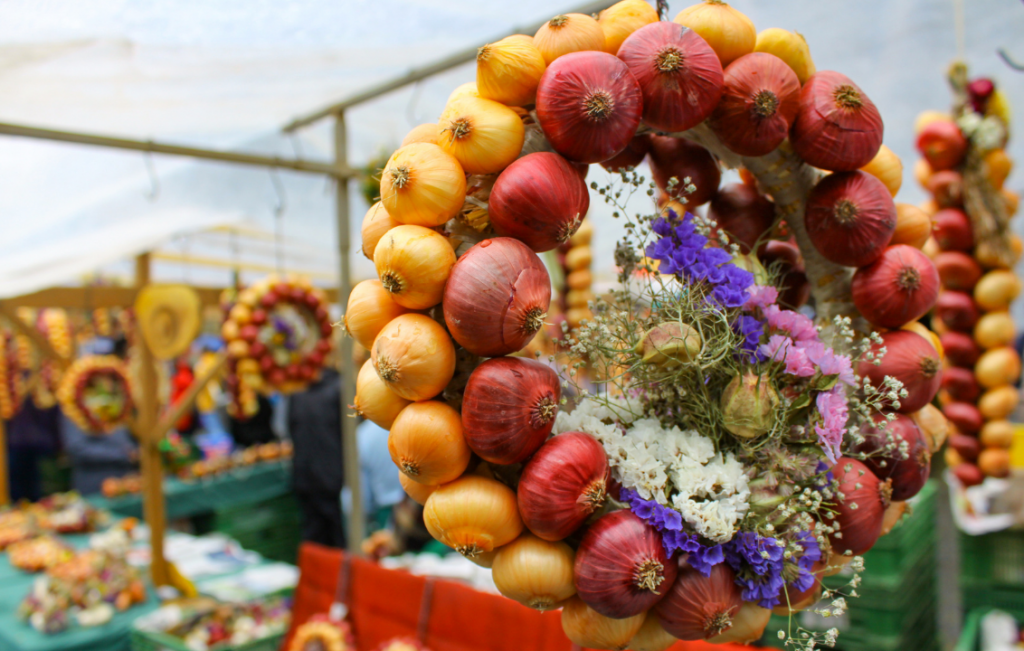
There’s also the traditional onion market in Bern. In November you’ll find this market where you can buy… well, onions. Onions of all colors and sizes: in braids, clusters, red, white, and even wrapped up as sweets for every food lover out there!
Yeah, I know, maybe you’re not the biggest onion fan. But what about Christmas? Switzerland shares many of the customs from its neighbors Germany and Austria. But Swiss people have many traditions of their own! In the Bernese Oberland region, where they have processions called “Trychle” that last from Christmas Day until New Year’s Eve. In these processions, people wear a big Trychler (cowbell) and masks as they walk through the streets making lots of noise with drums. This is meant to scare the evil spirits away!
Santa Claus also visits Switzerland, but he does it on December 6th, and he’s known as “Samichlaus.” You might also receive some presents from the baby Jesus (or Father Christmas) on the 25th, and on January 6th by the Befana or Three Kings. That’s a lot of present bringers!
Christmas in Switzerland is something really magical, but if you are not interested in winter sports or don’t like cold weather that much, you can visit the country between April and October. This is the best time to visit Switzerland, because of the warm weather and also because you’ll rarely get any humidity thanks to the high altitude.
And that’s Switzerland. A beautiful country is full of rich culture, delicious chocolate, and really amazing landscapes! Don’t forget the check the weather before planning your trip!
